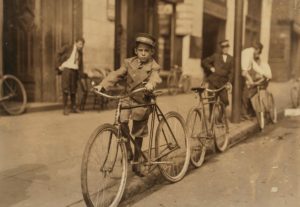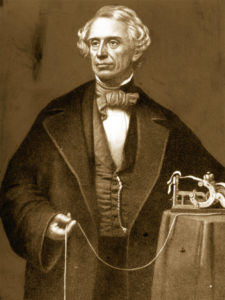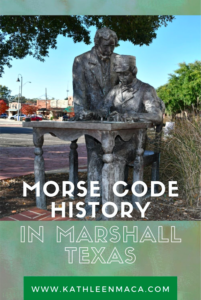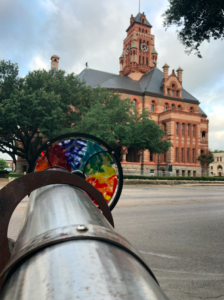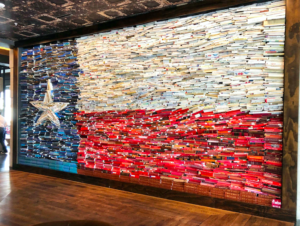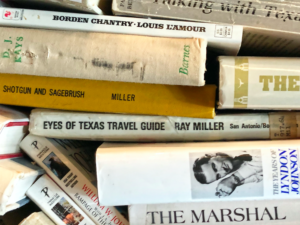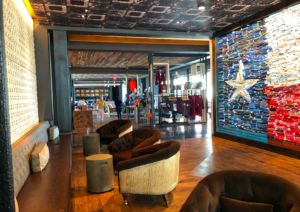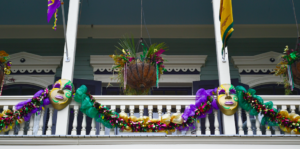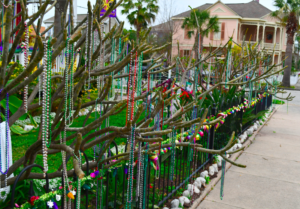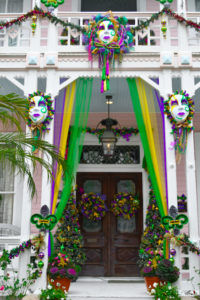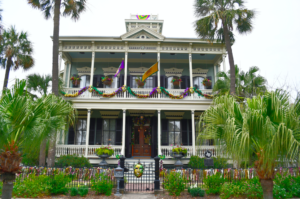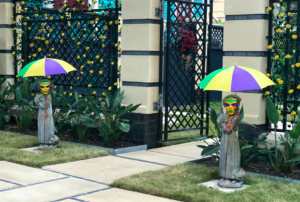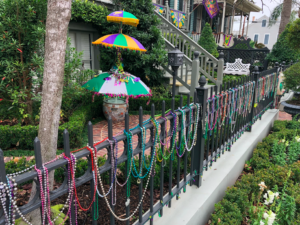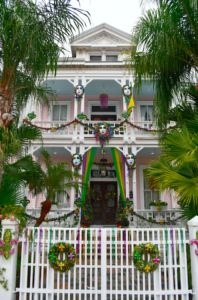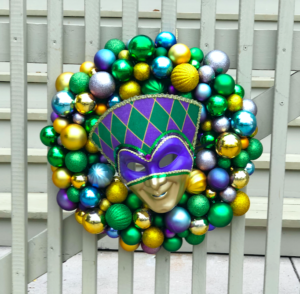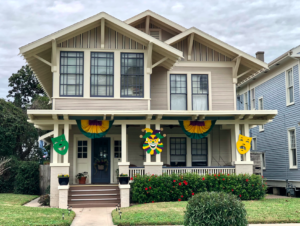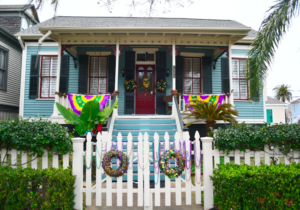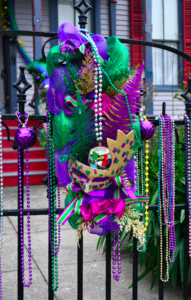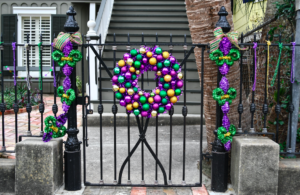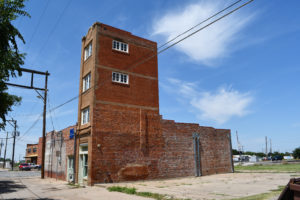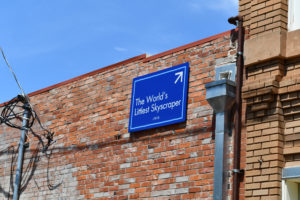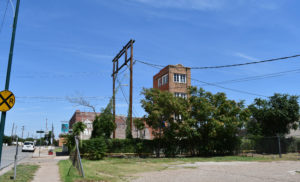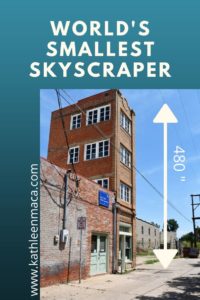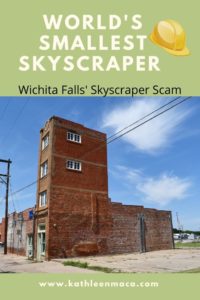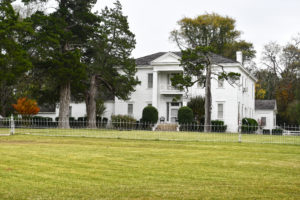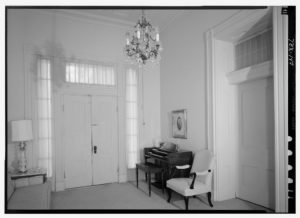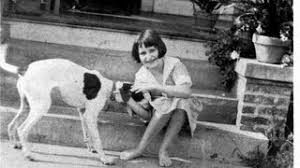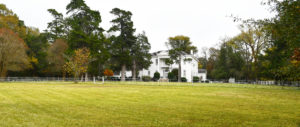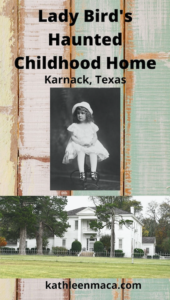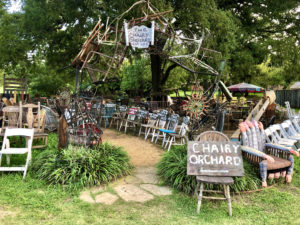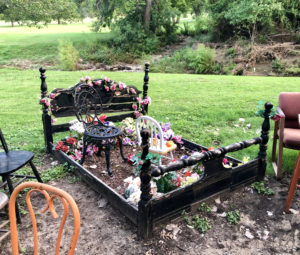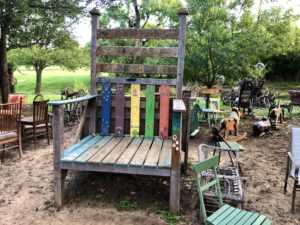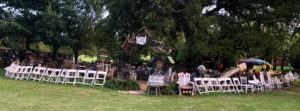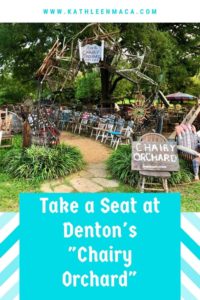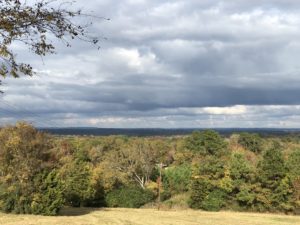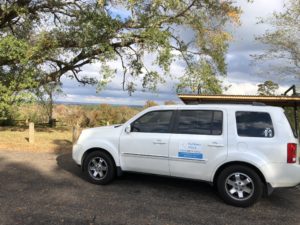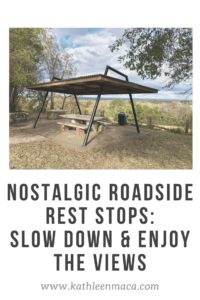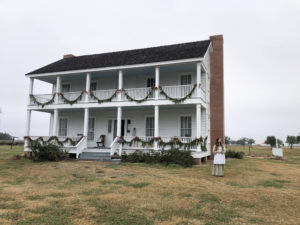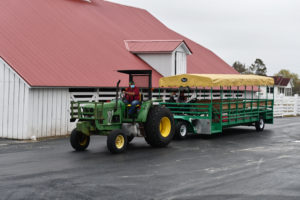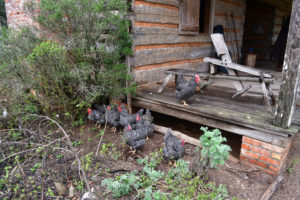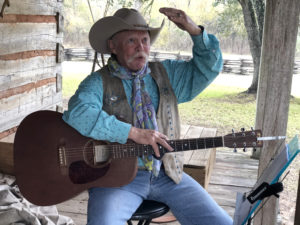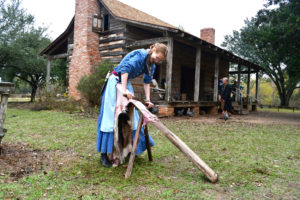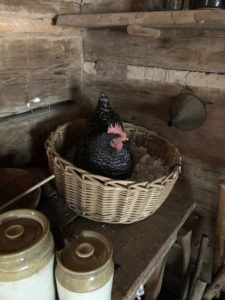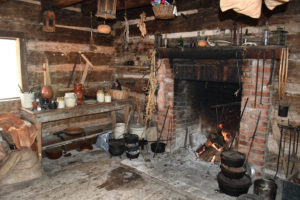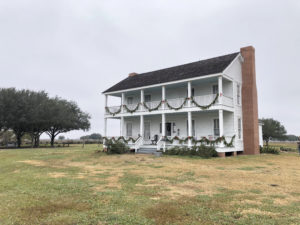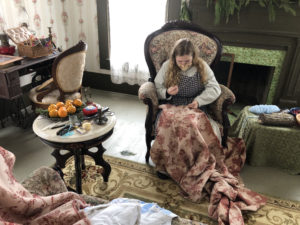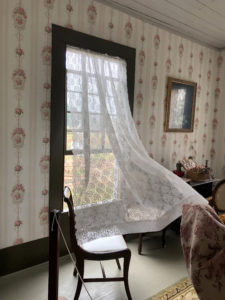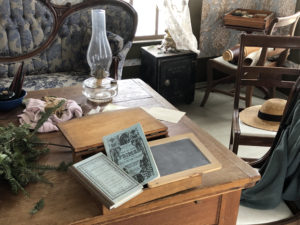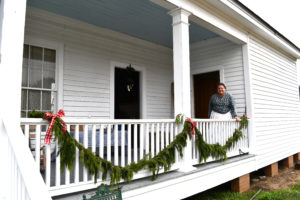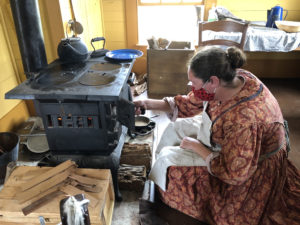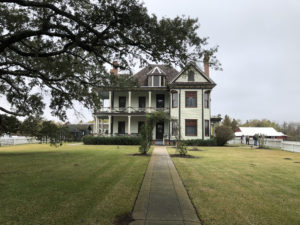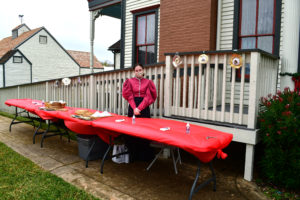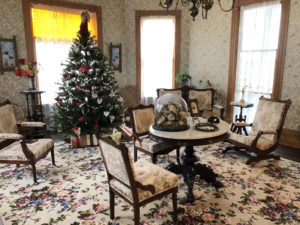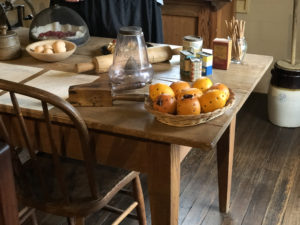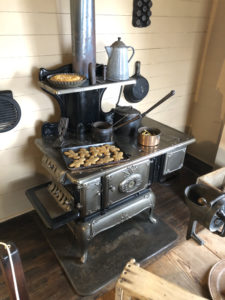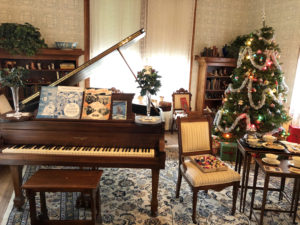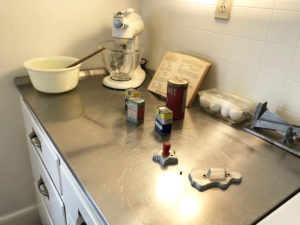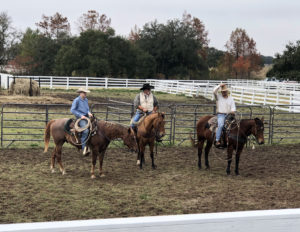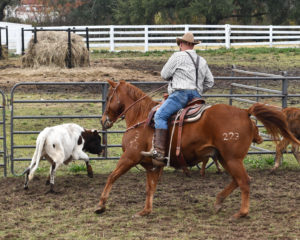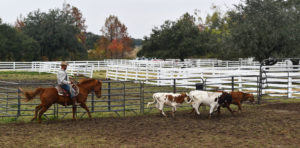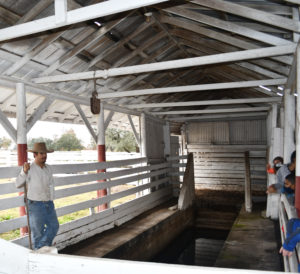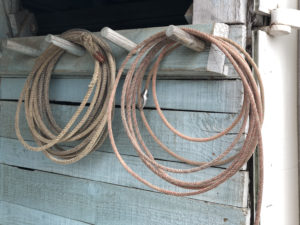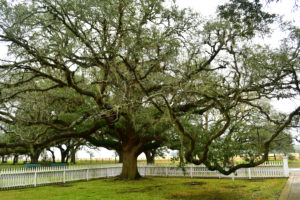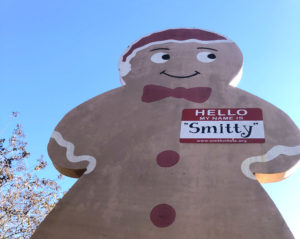Author: admin
Waxahachie’s Courthouse Square Kaleidoscope
Waxahachie courthouse Square kaleidoscope takes looking at the world through rose colored glasses one step further. The Internet active artwork created by Eddie and Mary Elizabeth Phillips sits on the corner of Main and College Street, just across the street from the fabulous Ellis County Courthouse. You overlook it if you’re as entranced with courthouse architecture as I am, but it’s worth looking for! It takes the cardboard kaleidoscopes of our youth to a while new level.
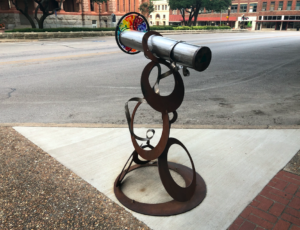 Built of scrap metal and stained glass, visitors can spin the glass wheel at one end and then look through the triangular opening at the other for a burst of ever changing colors. And the installation is near the corner streetlight it can even be enjoyed at night. (Good thinking!)
Built of scrap metal and stained glass, visitors can spin the glass wheel at one end and then look through the triangular opening at the other for a burst of ever changing colors. And the installation is near the corner streetlight it can even be enjoyed at night. (Good thinking!)
Click these links to see videos of this kinetic beauty in action, and then make a note to give it a spin yourself when you’re in the area!
Were you as fascinated with kaleidoscopes as a kid as I was?
Lone Star Book Art: Barbara Bush Wall at The George
Two of my favorite things: books and Texas!
As you walk into the doors of The George hotel in College Station, with first thing you’ll see is an enormous Texas flag. And boy does it make a Texas-size impact. Now walk over and take a closer look – it’s made entirely of books!
 That’s 10,000 books as a matter of fact, including works of fiction, non-fiction and even textbooks. Artist Thedra Cullar-Ledford spent months collecting books with red, white or blue spines from bookstores and thrift shops to create the floor to ceiling installation. Even more challenging, she included many Texas-centric subject matter like barbeque, agriculture and Texas biographies.
That’s 10,000 books as a matter of fact, including works of fiction, non-fiction and even textbooks. Artist Thedra Cullar-Ledford spent months collecting books with red, white or blue spines from bookstores and thrift shops to create the floor to ceiling installation. Even more challenging, she included many Texas-centric subject matter like barbeque, agriculture and Texas biographies.
It’s fun to get up close to see what titles you’ll find. I got a special kick out of the Eyes of Texas by Ray Miller- a book that was well loved in my home when I was growing up.
She then sorted them by color, nailed the books together, and screwed groups to the wall to create the pattern of the Lone Star flag.
It’s the most photographed spot in the Century Square complex.
The art piece was recently renamed in honor of former First Lady Barbara Bush as a symbol of her dedication to literacy – a touching tribute. Oh, and George W. Bush’s book “Decision Points” is among the books in the flag.
 Of course that isn’t where the hotel’s connection to the Bush family ends. The George, which was named for the great Georges in history, is just three miles from the George H. W. Bush Presidential Library and Museum. And the nearby Century Square restaurant is named Poppy, former president Bush’s boyhood nickname. If you’re a fan of the Today Show, you’ve probably heard Jenna Bush Hager refer to her famous grandfather by that name.
Of course that isn’t where the hotel’s connection to the Bush family ends. The George, which was named for the great Georges in history, is just three miles from the George H. W. Bush Presidential Library and Museum. And the nearby Century Square restaurant is named Poppy, former president Bush’s boyhood nickname. If you’re a fan of the Today Show, you’ve probably heard Jenna Bush Hager refer to her famous grandfather by that name.
The George, which is a property in the Valencia Hotel Group, has also instituted a “Round Up for Reading” program in which guests can donate any amount to the Barbara Bush Literacy Foundation. Ya gotta love a company that gives back to its community.
So next time you’re in College Station swing by The George (or better yet, stay there!) and see this impressive creation. Oh and…drop your spare change in the literacy foundation container at the front desk. You’ll come away with some great pics and feeling good about doing something nice for others at the same time.
Galveston’s Mardi Gras Houses
Looking for Mardi Gras festivities that are socially distant? Galveston Island has your answer.
Galveston Island has been celebrating Mardi Gras with citywide celebrations since 1871, and with private parties before that.
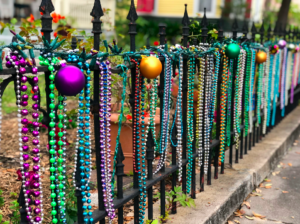 The town may be covered in sparkling lights for the Christmas season, but it bursts out in gold, green and purple for Mardi Gras. If you pass the houses at night and think you spot a Christmas tree inside a window, it’s most likely a Mardi Gras tree instead.
The town may be covered in sparkling lights for the Christmas season, but it bursts out in gold, green and purple for Mardi Gras. If you pass the houses at night and think you spot a Christmas tree inside a window, it’s most likely a Mardi Gras tree instead.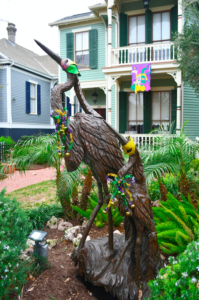

The annual parades have been cancelled this Carnival season for safety’s sake, but that won’t stop Galvestonians and their visitors from having fun. Taking a cue from New Orleans, instead of floats this year you’ll find “house floats” around the island.
Members of the Krewe of Saints who decorated their own homes complied a list of addresses so others can enjoy the fun. You can find an interactive map here.
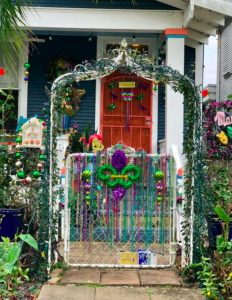 On Saturday, February 13th between 5 and 7 p.m., some of the participating houses will have beads and surprises for strolling revelers in their neighborhoods.
On Saturday, February 13th between 5 and 7 p.m., some of the participating houses will have beads and surprises for strolling revelers in their neighborhoods.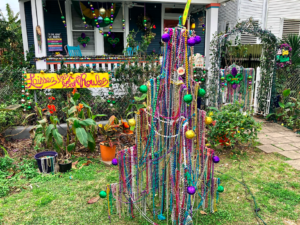
If you’re driving through the neighborhoods rather than walking, be aware that some of the streets are one way. There are often quite a few cars parked in front of the houses, making the streets narrower to navigate.
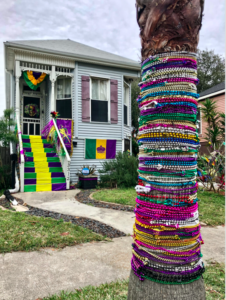 Of course, there are more homes decorated than the ones owned by this one Krewe, and the best way to see them all is to drive or walk the streets looking for the festive trimmings. If you only have a limited time, I would suggest exploring Sealy an Ball Avenues.
Of course, there are more homes decorated than the ones owned by this one Krewe, and the best way to see them all is to drive or walk the streets looking for the festive trimmings. If you only have a limited time, I would suggest exploring Sealy an Ball Avenues.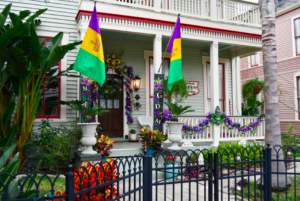
If you’re looking for some edible treats to keep up your Mardi Gras energy, you can find Mardi Gras bagels and cookies at Patty Cakes Bakery, king cakes at Maceo Spice Company and delicious seafood gumbo at the Black Pearl.
Have fun and Laissez les bon temps rouler!
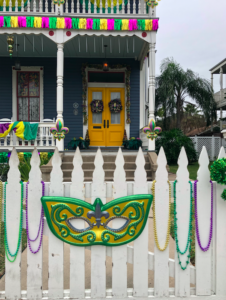
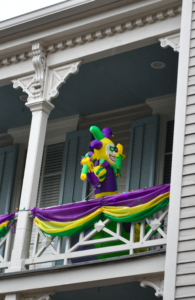
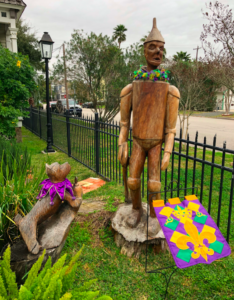
World’s Smallest Skyscraper: How a Con Man Gave Wichita Falls a Claim to Fame
How could a city invest a fortune in a “high-rise” that’s only about forty feet tall? This building’s tale should appear in the dictionary as the definition of “hoodwinked.”
In 1912, a large petroleum reservoir was discovered west of the city of Burkburnett, a small town just outside of Wichita Falls. Of course everyone was pretty happy about the financial windfall that ensued, but it also brought more people and businesses to town that wasn’t prepared to house them. People were so desperate that they were even conducting business in tents pitched on street corners. What Wichita Falls needed was more office space!
There was a one story building on the corner of Seventh and LaSalle Streets built by Augustus Newby in 1906 that was ideally located near the downtown railway depot. One of its tenants, J. D. McMahon, had a construction firm in there and say what he thought was a shining opportunity.
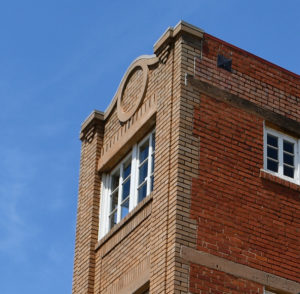 In 1919 he proposed to build a high-rise annex next to the Newby Building that would provide multiple floors of space for commerce to the boomtown. Sounds like a great idea, right? That’s what the city leaders thought, too.
In 1919 he proposed to build a high-rise annex next to the Newby Building that would provide multiple floors of space for commerce to the boomtown. Sounds like a great idea, right? That’s what the city leaders thought, too.
McMahon drew up impressive looking blueprints (though he wasn’t an architect) and showed them to potential investors, who forked over $200,000 in capital for the building’s construction. That’s the equivalent of $2.8 million in today’s money!
He proceeded with the construction of the skyscraper, but used his own construction crew to control and oversee the project.
Locals evidently turned their attention elsewhere as the building was being raised, because it was almost completed before they noticed that something was wrong. Their high-rise tower wasn’t what they had envisioned. Instead of the 480-foot structure thy expected; McMahon had built a 480-inch building.
The brick embarrassment was only eighteen feet deep, ten feet wide and each of the four floors had only 118 square feet of space on each of the four floors.
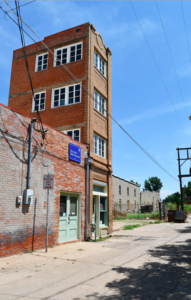 It’s been referred to as a glorified elevator shaft, which is especially ironic since the crew originally hired to install an elevator backed out of the project. The only way to access the upper floors was by an external ladder (until an interior staircase was built years later).
It’s been referred to as a glorified elevator shaft, which is especially ironic since the crew originally hired to install an elevator backed out of the project. The only way to access the upper floors was by an external ladder (until an interior staircase was built years later).
Infuriated investors took McMahon to court, sure that they would find justice for the con. But they had one more surprise in store.
Even though the judge was sympathetic to their complaints, he had to rule in favor of McMahon. What none of the financers had noticed in their excitement and rush to sign off on the project is that the blueprint listed the building’s dimensions in inches – not feet. It was build to the specifications proposed – 480” not 480’. Oh, the different an apostrophe makes!
The narrow stairs that were built a few years later took up twenty-five percent of the interior space, making it even smaller.
How could the situation possibly be worse? McMahon had never gotten permission from the property’s owner, who lived in Oklahoma, to build on the lot!
Needless to say, the Newby-McMahon Building was quite an embarrassment for local officials. The oil boom ended shortly after the building was completed, and it was boarded up and fell into disrepair.
Once the economy regained its footing, several small businesses operated in the snug spaces of the structure, including a barbershop and restaurants. It is now home to an antique shop on the bottom floor, and artist studios above.
Luckily, the building has survived several potentially fatal events including a fire, a 2003 tornado, and attempts by locals to have it demolished.
Wichita’s City County granted $25,000 in funds for the building’s restoration in 2005. Now, it’s true that that’s as much as it cost to build it in the first place – but that was a different time. Now the people of this Texas town have a reminder of the oil boom, a curiosity of visitors and something to point to and tell an amazing tale.
It might be difficult to spot from a distance because there’s more “sky” than “scraper,” but it’s worth stopping by to see this scam-tastic little piece of Texas history.
Lady Bird Johnson’s Haunted Childhood Home
When I hear the name Lady Bird Johnson, I immediately think of wildflowers. She was, after all, a visionary environmentalist who focused on protecting and preserving North America’s native plants, including Texas wildflowers.
But did you know that Texas native Lady Bird Johnson grew up in a haunted house?
High on a hill 2 ½ miles outside of Karnack, Texas an isolated white mansion surrounded by trees, fields and bayous houses a special place in Texas history — as well as its very own ghost.
The imposing, 17-room plantation style mansion known as the Brick House was built in 1843 by Cephus Andrews. It was also the site of a tragedy.
In 1861 during a violent thunderstorm, Andrews’ 19-year-old daughter Eunice, known as “Oonie,” sat in her bedroom beside a fireplace. Lightning struck the chimney and raced downward striking the young girl and consuming her in flames.
Legend has it that Oonie’s spirit has never left the home. Stories have been passed down through the years of eerie noises, ghostly apparitions, misplaced objects and other odd occurrences…all attributed to poor Oonie.
 In 1902 the Andrews family sold their home and thousands of acres of cotton to the wealthiest man in town, Thomas Jefferson Taylor. He also owned two cotton gins, a fishing business and two country stores emblazoned with boastful signs stating “T. J. Taylor—Dealer in Everything.”
In 1902 the Andrews family sold their home and thousands of acres of cotton to the wealthiest man in town, Thomas Jefferson Taylor. He also owned two cotton gins, a fishing business and two country stores emblazoned with boastful signs stating “T. J. Taylor—Dealer in Everything.”
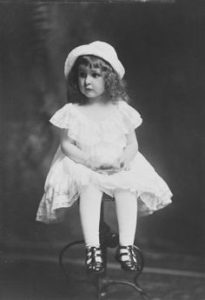 Taylor and his wife Minnie had two sons, and in 1912 added their only daughter Claudia Alta Taylor. Her nursemaid took one look at the dark-haired baby and said she was “as purty as a lady bird.” The endearing nickname followed her throughout her life.
Taylor and his wife Minnie had two sons, and in 1912 added their only daughter Claudia Alta Taylor. Her nursemaid took one look at the dark-haired baby and said she was “as purty as a lady bird.” The endearing nickname followed her throughout her life.
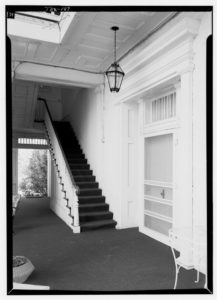 When Lady Bird was 5, the Brick House witnessed a second tragedy. Her mother fell down the staircase of the home and died a few days later from complications of a miscarriage caused by the accident.
When Lady Bird was 5, the Brick House witnessed a second tragedy. Her mother fell down the staircase of the home and died a few days later from complications of a miscarriage caused by the accident.
Lady Bird, whose brothers were away at school (and weren’t even told about their mother’s death for almost a year), remained in the home and was raised by her maternal aunt Effie who came from Alabama to live at the home.
When asked about the Brick House’s ghost in later years, Lady Bird would say that she often had a feeling of apprehension and unease in the home. She spent most of her indoor time in her room, which was just down the hall from Oonie’s room that servants repeated warned her to stay away from…as they did. The sounds of the old house, including wind whipped through the sills of the floor to ceiling windows must have added to the spooky atmosphere.
Her aunt Effie believed that Minnie’s ghost visited her at night to instruct her about caring for Lady Bird, washing windows and taking care of other forgotten household chores.
In her 80’s Lady Bird told her biographer, “I would not, even now, at this age, feel comfortable being alone in that house myself.”
Luckily young Lady Bird was able to spend most of her time outdoors strolling through the woods and fields where she developed her love of nature’s beauty. So it’s perhaps indirectly thanks in part to the ghost of forever-young Oonie that Texas enjoys wildflowers along its highways each spring.
The home still stands as a national historic landmark, and is privately owned. I wonder if Oonie still provides caretaking instructions to them.
Take a Seat in the Chairy Orchard
If quirky places speak to your heart, you definitely need to pull up a chair in Denton’s “Chairy Orchard.”
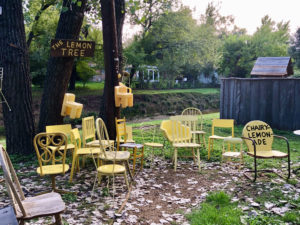
Long time friends Anne Pearson and Judy Smith, known as the “Chairy Fairies,” live in the houses on either side of the empty lot they’ve owned for 40 years and created this artsy attraction. Backing up to a creek, the lot is in a floodway so will never be able to be built on…so why not have some fun with it?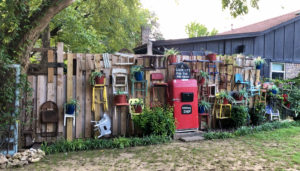
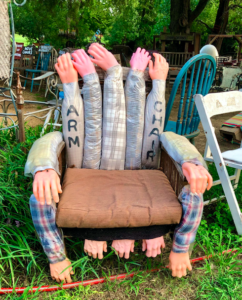
Judy started attaching chairs to a tree a few years back and called it the “Chairy Tree.” When Anne joined in the fun, the tree soon turned into an orchard! The chairs com from thrift stores, garage sales and curbside discard piles. Some are even let anonymously by admirers of the project.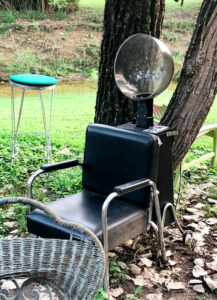
 Mark Holderbaum, a friend of the crafty duo, built the archways for the site by welding about 30 metal chairs into a Chairy Arch. Judy’ son Terry built a giant chair and hr grandson Drew build the Chairy Totter.
Mark Holderbaum, a friend of the crafty duo, built the archways for the site by welding about 30 metal chairs into a Chairy Arch. Judy’ son Terry built a giant chair and hr grandson Drew build the Chairy Totter.
A collection of diminutive chairs cluster along the boards of the “Chairy-wood Fence,” and old and weathered chairs end their display days in the “Chairy Cemetery.”
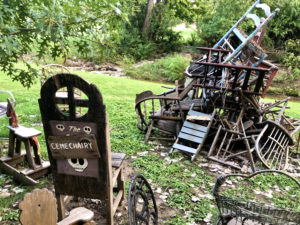
Bring a picnic, bring a friend, bring a sense of humor and definitely bring your camera! The Chairy Orchard is open to everyone from dawn to dusk at 1426 Churchill Drive in Denton.
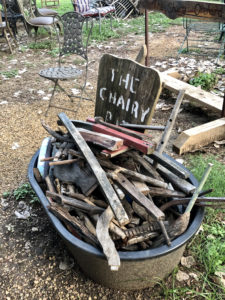
Road Trip Rest Stops – Enjoy the Ride
Starting off a new year usually begins with lofty goals quickly filling up our calendars. But it’s probably the ideal time to make a decision to slow down and enjoy the ride.

When I was growing up, family car trips looked a lot different than they do today. The journey and taking in the sights of the places we traveled through were just as important and fun as the places we were going to.
While a modern day family is more likely to think of Bucee’s when someone mentions a rest stop, (we had our version of that too back in the day, in the form of Stuckey’s) the roadside rest stops were something entirely different.
Families didn’t scurry out of the car and head in different directions with the goal of loading up their arms with snacks and souvenirs.
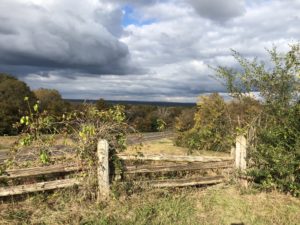 Instead small clusters of roadside rest stops, basically roofed spots with picnic tables, dotted the sides of the two-lane blacktop highways and offered travelers a place to get out of their car and stretch their legs, let the kids run off some excess energy, and unload their hamper of food Mom had packed that morning to enjoy a family picnic while taking in a view.
Instead small clusters of roadside rest stops, basically roofed spots with picnic tables, dotted the sides of the two-lane blacktop highways and offered travelers a place to get out of their car and stretch their legs, let the kids run off some excess energy, and unload their hamper of food Mom had packed that morning to enjoy a family picnic while taking in a view.
Texas is lucky to still have a wide variety of these mid-century rest stops, so it might come as a surprise that other states have taken to demolishing theirs. Along Texas highways you might spot some shaped like teepees, with wagon-wheel sides, retro-curved roofs or just simple, functional designs. They bring back great memories of time spent on family vacations, and rank right up there with folded maps from gas stations on the nostalgia scale.
I’ve never gotten over my love of road trips, which is a mystery to some of my friends who would rather fly somewhere that’s only a couple of hundred miles away. But I’ve noticed with all of the challenges in the past few months that many Americans are rediscovering the love of road trips, whether they are going across the state or across the country.
And, yes, I’ll make the time to take a few minutes at lovely spots I find like this one, because they’re just as enjoyable when I’m traveling by myself.
Take it from me, and rush less the next time you’re driving along to a destination. If you see a nice roadside rest area, take the opportunity to pause for a few minutes, enjoy a drink or snack and the view. It can put a whole new perspective on your trip.
What road are you planning to follow in 2021?
Christmas at the George Ranch 2020
Ready to peek into Christmas Past, Texas style? Let me take you on a virtual visit to the George Ranch Historical Park in Richmond where they’ve lassoed a wonderful event to share just that!
The annual Christmas at the Ranch event was a bit different this year due to additional safety protocols, but the staff couldn’t have created a more welcoming and fascinating day for their guests.
Founded in 1824, the George Ranch showcases the four homes of four generations of this Texas family, and this time of year they’re dressed up for the season.
My first stop was at the visitor center, where I was provided with a map of the ranch and demonstration schedule. The park is laid out in a mile long loop (yes, a MILE), and visitors can ride a tractor pulled tram from one stop to the next. But I highly suggest combining riding and walking when weather permits, to enjoy the natural surroundings.
I rode the tram to my first stop, the 1830s Jones Stock Farm dog trot cabin, and was greeted by the volunteers dressed in period costumes. The cabin and buildings are replicas of Henry and Nancy Jones’ homestead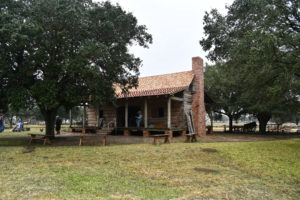 – one of the earliest settlements of Northeast Mexico. Nope, it wasn’t even Texas yet!
– one of the earliest settlements of Northeast Mexico. Nope, it wasn’t even Texas yet!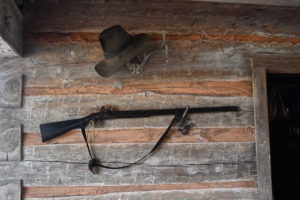
One gentleman shared the background of the family and information about the cabin, and another charmer played beautiful music on his guitar and told a few tall tales that were impossible to resist.
A young woman had the unenviable, sticky task of demonstrating how to clean a deer hide in a yard populated by adorable hens, but managed to do it with a smile while explaining that when the thin hides were worked until thy were translucent, they could be used to cover the cabin windows during the winter months (since glass wouldn’t have been available).
In the breezeway of the dogtrot a young man worked at weaving on a loom, taking breaks to serve visitors Mexican hot cocoa that was brewing over one of the hearth fires – and was a treat on the chilly day.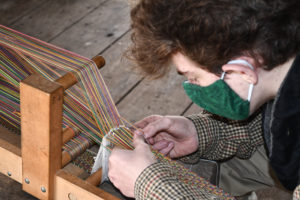
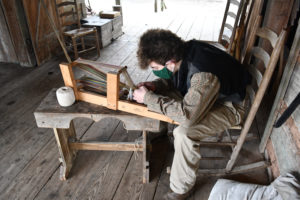
 In the nearby hog pen, one of the volunteers scratched the back of one of the docile 300-pound Berkshire pigs that are part of an initiative to preserve heritage breeds. Seems these fragrant residents are descendants of a rare breed that came to Texas from England in the 1830s. I know people who can’t trace their lineage as well!
In the nearby hog pen, one of the volunteers scratched the back of one of the docile 300-pound Berkshire pigs that are part of an initiative to preserve heritage breeds. Seems these fragrant residents are descendants of a rare breed that came to Texas from England in the 1830s. I know people who can’t trace their lineage as well!
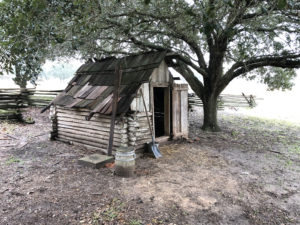 After a quick look at the chicken coop (always interesting to me since gathering the eggs was my job when visiting my grandmother’s farm), smokehouse barn and outdoor kitchen, I worked my way back to the road to hop on the tram again.
After a quick look at the chicken coop (always interesting to me since gathering the eggs was my job when visiting my grandmother’s farm), smokehouse barn and outdoor kitchen, I worked my way back to the road to hop on the tram again.
Next stop: the 1860s Ryon Prairie home – picture perfect with garlands of evergreens draped across the porch rails.
Mary Moore “Polly” Ryon was the oldest of the Jones’ daughters. She inherited th majority of her family’s wealth, and amazingly was on of the largest land holders in the region by age 18! She and her husband William built a cattle ranching empire after the Civil War.
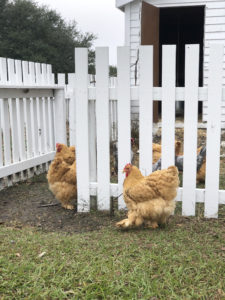
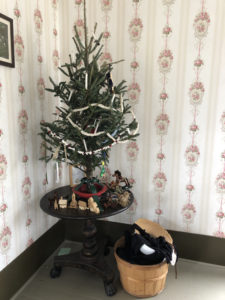 One young woman showed me around the knot garden and chicken coop until it was my turn (social distancing, ya know) to go inside the house.
One young woman showed me around the knot garden and chicken coop until it was my turn (social distancing, ya know) to go inside the house.
Inside two young docents explained the uses of the men’s and women’s parlors, and directed me toward the kitchen where more volunteers were baking cookies for the visitors in a period stove.
I decided to walk the rest of the property rather than ride the tram since it was a beautiful day and I didn’t see any reason to rush.
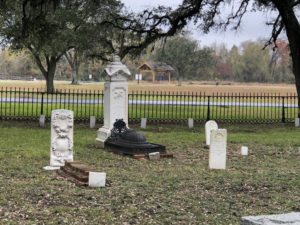 Susan Elizabeth Ryan was Polly’s only surviving child and sole heir of Polly’s estate. She married banker civic leader John Harris Pickens Davis. The Victorian era home sits in a complex that includes a sharecropper’s farm, the family cemetery with graves dating between the 1820s to 1916 and the Oldenberg blacksmith shop. It seemed ironic to me that Polly isn’t in the family cemetery (she’s at Morton Cemetery in Richmond). But the existing monuments are beautiful and well cared for.
Susan Elizabeth Ryan was Polly’s only surviving child and sole heir of Polly’s estate. She married banker civic leader John Harris Pickens Davis. The Victorian era home sits in a complex that includes a sharecropper’s farm, the family cemetery with graves dating between the 1820s to 1916 and the Oldenberg blacksmith shop. It seemed ironic to me that Polly isn’t in the family cemetery (she’s at Morton Cemetery in Richmond). But the existing monuments are beautiful and well cared for. 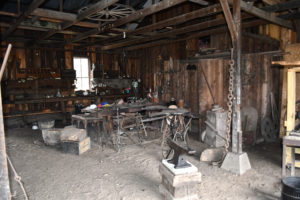
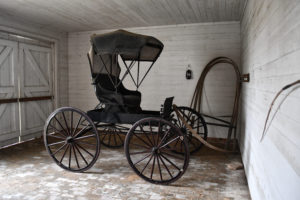 In the blacksmith shop, kids were invited to try their hand at “forging” knives from chunks of clay with rubber mallets.
In the blacksmith shop, kids were invited to try their hand at “forging” knives from chunks of clay with rubber mallets.
In the side yard of the home, a sweet volunteer led visitors in creating Victorian style Christmas ornaments from paper as keepsakes of their visit.
The last home to tour was the 1930s George Ranch House (designed by famous Galveston architect Nicholas Clayton) and complex, where a barbershop quartet was entertaining passersby with Christmas carols.
Mamie George and her husband A.P. were the last descendants of the Henry and Nancy Jones family to oversee the ranching operation. Their influence and support is still seen across the community in libraries, schools, the Houston Livestock Show and Rodeo, a community center and countless other contributions. 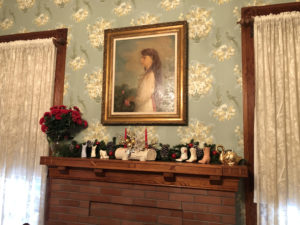
Their home is still decorated with their furnishings, right down to the ornaments on the Christmas tree! I loved Mamie’s collection of ceramic cowboy boots from her travels lined up on the mantle.
Once all of the home tours were checked off of my list, I headed to the arena and barn area for the cattle working demonstrations.
The cowboys demonstrated some basic cutting and lassoing techniques while explaining how and why these things are still down on the working ranch. Afterward, one of the cowboys walked the onlookers over to a dipping vat and related how they were used in the past – and why they aren’t any more (thank heaven!).
Whether you’re looking for a day out by yourself like I was, or for something for the entire family to enjoy together, I highly recommend a visit to the George Ranch. It’s beautiful, fascinating…and you might just pick up a little Texas history along the way.
Smitty, the Texas-sized Gingerbread Man
“Run, run, run as fast as you can
You can’t catch me, I’m the gingerbread man!”
Well, actually it’s pretty easy to catch up with THIS gingerbread man.
In 2006, the organizer of Smithville Texas’ annual Festival of Lights event baked up a delicious plan to take their celebration to the next level – by baking the world’s largest gingerbread cookie!
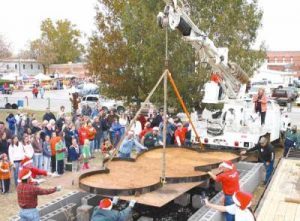 Mixing together 750 pounds of flour, 49 gallons of molasses and 72 dozen (separated!) eggs, they created a Texas-sized gingerbread man. They n immense cookie sheet baked the 1,307 pound fellow on an immense cookie sheet over a dump truck load of charcoal (take THAT Food Network!) and then raised him with a crane to the 65 degree angle required by the folks at Guinness World Records for consideration.
Mixing together 750 pounds of flour, 49 gallons of molasses and 72 dozen (separated!) eggs, they created a Texas-sized gingerbread man. They n immense cookie sheet baked the 1,307 pound fellow on an immense cookie sheet over a dump truck load of charcoal (take THAT Food Network!) and then raised him with a crane to the 65 degree angle required by the folks at Guinness World Records for consideration.
Phew!
The staff at Guinness officially recognized the spied feat in the 2009 edition of their record book.
 Now . . . how to memorialize the achievement? The Smithville Area Chamber of Commerce and the City of Smithville had the cookie sheet used to bake the gigantic gingerbread man converted into an enormous, 20-foot tall metal replica of the cookie, and the townspeople affectionately dubbed him “Smitty.”
Now . . . how to memorialize the achievement? The Smithville Area Chamber of Commerce and the City of Smithville had the cookie sheet used to bake the gigantic gingerbread man converted into an enormous, 20-foot tall metal replica of the cookie, and the townspeople affectionately dubbed him “Smitty.”
He stands in the town park making sure visitors can celebrate the spirit of Christmas all year long. Heads up, though, even though he towers over the park, he’s a bit hidden from the street by the trees in the park so you’ll have to get out of you car to see him in all his gingerbread-y glory.



